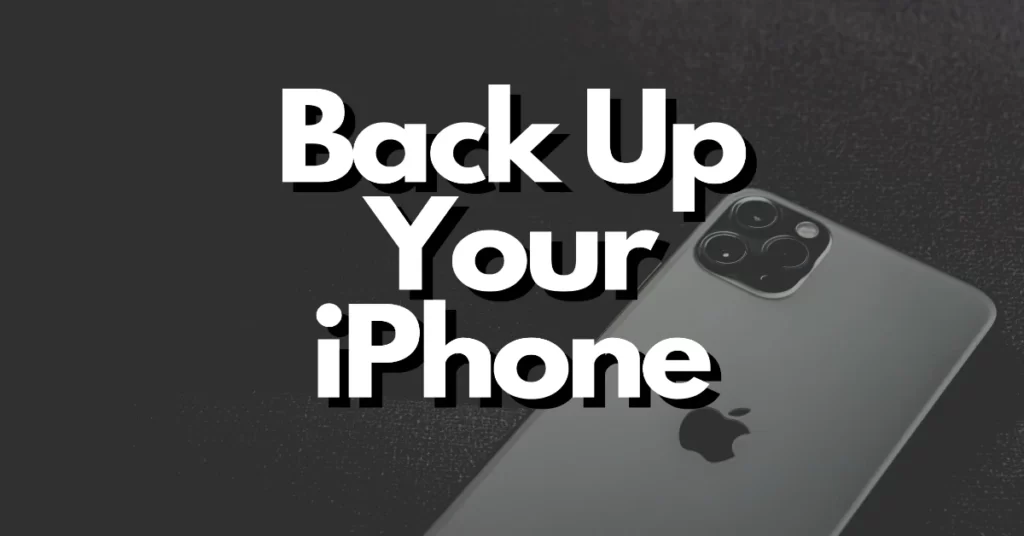Backing up your iPhone is essential to safeguarding your valuable data, including photos, contacts, messages, and applications. In the event of device loss, damage, or data corruption, having a backup ensures that you can restore your information and continue seamlessly.
In this article, we will provide a step-by-step guide on how to backup your iPhone, exploring both iCloud and iTunes backup methods. By following these instructions, you can protect your data and enjoy peace of mind knowing that your iPhone backup is up to date.
Table of Contents
The Importance of iPhone Backup: Safeguarding Your Data
Backing up your iPhone is crucial for safeguarding your valuable data. With the amount of personal information, photos, videos, and documents stored on our devices, a backup ensures that you won’t lose everything in case of theft, damage, or software issues. Regular backups provide peace of mind and enable easy data restoration when needed.
By creating a backup, you can protect your memories, sensitive information, and important files, ensuring they remain safe even in unexpected circumstances. Whether it’s through iTunes or iCloud, taking the time to back up your iPhone is a small effort that can prevent significant data loss and preserve what matters most to you.
Step-by-Step Guide: How to Backup Your iPhone Using iTunes
Creating a backup of your iPhone using iTunes is a straightforward process that ensures the safety of your data.
First, make sure you have the latest version of iTunes installed on your computer. Connect your iPhone to the computer using the USB cable and open iTunes.
Select your device when it appears in iTunes and navigate to the “Summary” tab. Under the “Backups” section, choose the option to create a backup manually.
You can encrypt the backup to include passwords and Health app data for added security.
Finally, click the “Back Up Now” button, and iTunes will start creating a backup of your iPhone.
It is essential to keep your computer and iTunes updated regularly to ensure seamless and secure backups of your device.
Exploring iCloud Backup: Backing Up Your iPhone to the Cloud
iCloud provides a convenient and secure way to back up your iPhone’s data to the cloud. With iCloud Backup enabled, your device will automatically back up whenever it is connected to Wi-Fi, locked, and charging. To set up iCloud Backup, go to your iPhone’s Settings, tap your name, and select “iCloud.” From there, choose “iCloud Backup” and toggle the feature on.
You can then tap “Back Up Now” to initiate an immediate backup or let the automatic backups take place. iCloud Backup includes your device settings, app data, photos, videos, and more, ensuring that your data is safely stored in the cloud and accessible whenever you need it. Regularly check your iCloud storage to ensure you have enough space for backups and consider upgrading if necessary.
Best Practices for iPhone Backup: Tips and Tricks to Ensure Data Security
To ensure the security and reliability of your iPhone backups, it is important to follow some best practices. First, create multiple backup copies, both in iTunes and iCloud, to have redundancy in case of any issues with one backup. Encrypting your backups adds an extra layer of protection, especially when sensitive information is involved. Regularly verify the integrity of your backups by restoring them to a different device or computer.
Keep your iPhone, iTunes, and iCloud up to date with the latest software versions to benefit from enhanced security features. Finally, periodically review your backup settings and storage availability to ensure uninterrupted backup functionality. By implementing these best practices, you can maximize the security and effectiveness of your iPhone backups and protect your valuable data.
Conclusion
In conclusion, backing up your iPhone is a simple yet crucial task that should not be overlooked. By regularly creating backups using either iCloud or iTunes, you can protect your data from potential loss or damage. It is recommended to set up automatic backups and periodically verify that your backups are successful.
Remember to keep your backup data secure by using strong passwords and encryption when necessary. With a reliable iPhone backup strategy in place, you can confidently explore new features, update your device, or address unforeseen issues, knowing that your valuable data is safely preserved.

